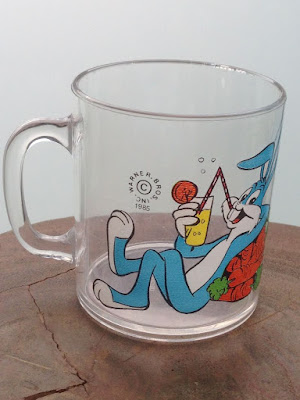I've never been a great friend of plastic.
Se on tuntunut materiaalina aika heppoiselta ja kulutusta huonosti kestävältä. 1960-luvulla muovi tuli osaksi jokapäiväistä elämää ja se oli siihen aikaan POP. En silti kauheasti tykästynyt muoviin.
It has seemed to be somewhat mild in material and poorly sustainable when consumed. In the 1960s, plastic became part of everyday life and at that time it was POP. Still I was not terribly keen in plastic.
Vähän myöhemmin tuli muuten OP. Se tarkoitti mustavalkoisia, suuria ja graafisia kuvioita ja oli huippumuotia. Nyt
By the way, a little later, came OP. It meant black and white, large and graphic patterns and was the top fashion. Now I
Muovikasseja kyllä harrastin, niitähän sai ruokakaupasta aikoinaan ilmaiseksi. Ja vaatekaupoista yhä vieläkin. Ruokakaupasta en osta muovikassia, mutta vaatekaupassa en siitä kieltäydy. Mistäpä ilmaisesta sitä ihminen kieltäytyy?
Yes, I used some plastic bags, and they were free from the groceries at that time. And still are from clothing stores. I do not buy a plastic bag from a grocery store, but I do not deny of it in the clothing store. How does a person refuse of a free thing?
Tiedän toki, että merissä on muovijäteongelma. Eniten muovia päätyy mereen Kauko-idässä, joten ei kai se minun syyni voi olla? En ole koskaan heittänyt muovikassia mereen. Minähän asun järven äärellä, ja ongelma ei järviä koske.
I know, of course, that there is a plastic waste problem in the sea. Most plastic comes to the sea in the Far East, so I guess it can not be my fault? I have never thrown a plastic bag into the sea. I live by the lake, and the problem is not lakes'.
Paitsi että muovijäteongelma koskee myös järviä. Vaikka emme heittele sinne muovikasseja, mikromuovia tulee joka paikasta. Sillä muovi ei maadu, vaan jauhautuu mikromuoviksi. Tai on sellaista jo alun perin, kuten vaatteissa, kosmetiikassa ja talomaaleissa. Pesemällä yhden fleece-kankaisen vaatteen tyrkkäät luontoon melkein 2 000 mikrokuituhiukkasta. (Mikä on järkyttävää, sillä mikä muu on ihanampaa kuin vanha, virttynyt fleecekylpytakkini?) Onko hammastahnasi, suihkugeelisi tai kuorintavoiteesi purkin kyljessä kirjaimet PE tai PP? Ne ovat muovia. Autojen renkaatkin jauhavat pinnoilta muovia, ja se päätyy jätevesien mukana vesistöihin.
Except that the plastic waste problem also applies to lakes. Even though we do not throw plastic bags there, the micro plastic comes from everywhere. Because the plastic does not decompose, but it is pulverised into a micro plastic. Or is that already originally, like in clothes, cosmetics and house paints. By washing one fleece-cloth garment you stick almost 2,000 microfiber particles to the wilderness. (Which is shocking, because what could be nicer than my old and worn fleece bathrobe?) Does your toothpaste, shower gel or peeling cream canister have the letters PE or PP on it? They are plastic. The tires of the car also grind plastic off the surfaces, and it ends up in the waters with the wastewater.
Sieltä vesistöstä me sitten syömme sen mikromuovin ravintoketjun mukana. Etkö syö kalaa? Juot kuitenkin vettä. Se tulee vesistöstä. Ja käytät suolaa: mikromuovia on jo merisuolassakin.
From there, from the water system, we'll eat the micro plastic with the food chain. Don't you eat fish? But you drink water. It comes from the nature's water system. And you use salt: there is already micro plastic in sea salt.
Paitsi syömällä ja juomalla, muovia tulee elimistöömme hengittämällä. Lelut salakuljettavat esimerkiksi ftalaatteja ja muita muovin pehmentäjiä lastenhuoneeseen. Kuuden haitallisimman ftalaatin käyttö on nykyisin kielletty, muita tutkitaan. Riski ei ole ohi siinäkään vaiheessa, kun lapsesi ei enää pistä leluja suuhunsa. Ftalaatit haihtuvat huoneilmaan ja sitoutuvat huonepölyyn.
Except by eating and drinking, plastic comes to our body by breathing. Toys are smuggling, for example, phthalates and other plastic softeners into the kid's room. The use of the six most damaging phthalates is currently prohibited, others are being investigated. The risk is not over at any point when your child no longer puts toys in his mouth. Phthalates evaporate into room air and bind to room dust.
 |
| Tästä muoviesineestä en kuitenkaan luovu ensimmäisten joukossa. However, I do not give up on this plastic item among the first. |
----------
Elämänohje:
Life advice:
Otetaan opiksemme - mitä tässä muuta voi sanoa.
Take our lessons - what else can you say.
Elämänohje:
Life advice:
Otetaan opiksemme - mitä tässä muuta voi sanoa.
Take our lessons - what else can you say.


Hurjaa on 😳
VastaaPoista